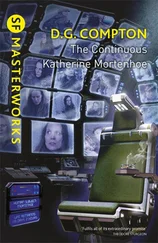Clearly, I thought on my way back to work, Marlinchen still saw me as an authority figure. If I was going to spend the next few weeks looking in regularly on her and her brothers, I at least wanted her to loosen up a little.
What I needed was to spend some time with Marlinchen in which I wasn’t probing into uncomfortable family affairs, time in which neither of us brought up Hugh, or Aidan, or family finances, or jurisdictional lines. What we needed was to do something totally different. Something fun.
When I got to the detective division, I told Van Noord I was going to leave a little early.
***
“We’re goingto get arrested,” Marlinchen said flatly.
At six, the day’s light was just starting to mellow. Marlinchen and I were on a county road outside the Cities, near the St. Croix River. I’d pulled the Nova over to the side so she and I could switch places.
Marlinchen had been fine a little earlier, when, in an empty church parking lot, I’d taught her the basics of driving. She’d made a 15-mile-per-hour circuit around the pavement, braking, learning to reverse. “This isn’t that hard,” she’d said, pleasure growing along with confidence.
Now it was a different story.
“Do I have to do this on a highway?” she said, her voice taking on a wheedling quality. “Shouldn’t I start out on a 25-mile-per-hour street somewhere?”
“Those kinds of streets have cross traffic, four-way intersections, and kids on wobbly bikes,” I told her. “Here you’ve got nothing but clear, straight road.”
A flatbed truck roared past us at 75 miles per hour. Seeing that, Marlinchen eyed me reproachfully.
“You’re running a household without even being able to drive to the store,” I said. It was an argument I’d made earlier, when I’d first suggested a driving lesson to her. “You need to learn this.”
“What if I’m not going fast enough for the traffic?” she asked.
“They’ll pass,” I said. “Country drivers love to pass; it breaks up the monotony.” To forestall any further argument, I got out of the car. Halfway around the front fender, I saw Marlinchen reluctantly climb out as well.
“With great effort,” I said dryly, when we’d traded places, “unwrap one of your hands and put down the parking brake, like you did before. Good. Now, with your foot on the brake, put the car in drive. Your right foot. Do not drive two-footed.”
Marlinchen pulled to the shoulder and stopped there, looking around. A few seconds passed, then a few more. There wasn’t a single vehicle in either direction. I didn’t know what she was looking for.
Was I pushing her too hard? I’d wanted her to loosen up for once, and do something fun, but Marlinchen didn’t seem to be enjoying herself at all.
“We’re the only car in sight,” I pointed out. “Conditions are not going to get any better.”
Marlinchen took her foot off the brake and pulled onto the road. The speedometer needle rose with painful slowness to 30. Then to 35. Finally to 45.
I said, “The speed limit’s 55.”
“I know,” Marlinchen said.
“Which means much of the traffic is going 65,” I explained. “Speed up.”
The engine noise pitched upward, and the speedometer needle began to creep forward again. When it got to 60, Marlinchen looked visibly relieved at being able to ease up on the accelerator.
“Feeling okay?” I said.
“Yes,” she said, sounding surprised. Her hands relaxed on the wheel. “Where are we going?” she asked.
“No destination,” I said. “This road runs a long way. Just get comfortable with driving.”
In the right-side mirror, a vehicle appeared. It looked the size of a fly, but that was changing fast. The fly resolved into a big Ford pickup, gaining on us fast.
“Look in your rearview mirror,” I said.
She did. Instantly, her hands tensed on the wheel again.
“No problem,” I assured her. “He’s going to pass us.”
“What do I need to do?” Marlinchen asked me.
“Nothing. He’ll do it all. Watch what he does.”
The truck caught up with us and tailgated for about twenty seconds. Marlinchen looked in the mirror at him for about nineteen of those seconds.
“Don’t spend all your time looking at him,” I said. “Be looking ahead. That’s where you’re going.”
The truck, having asked us to speed up and getting no response, dropped back a polite distance. Then its big black nose dipped slightly out toward the center line, looking ahead, where there was no oncoming traffic in sight, just broken yellow lines. The driver swung out easily into the opposing lane, sped past us at about 90 mph, and cut back in.
“Wow,” Marlinchen said.
“See?” I said. “No big deal. If there was any opposing traffic, you might have wanted to ease off the accelerator a little, just to make sure he could get back in safely. Or, once he was ahead of you, you could flash your lights. That means you’re letting him cut back in.”
“There’s a code of conduct?” Marlinchen said. “Cool.”
We drove another ten minutes. Then a vehicle came into view ahead of us. A goldenrod machine, a tractor. We were gaining fast, and it was soon clear that the farmer was driving about 20 mph.
“Pass him,” I said.
“What?”
“Pass him. This guy’s crawling. We’ll be stuck behind him forever if you don’t.”
“I can’t,” she said.
“Yes you can. This car’s got some power. It’ll do it. But once you start, don’t try to pull out. Indecision gets people hurt.”
We fell in behind the tractor. I looked ahead to ensure there was no one coming.
“You’re clear,” I said. “Go.”
The engine throbbed as Marlinchen swung into the opposite lane. The rpm needle jumped, and the speedometer began climbing: 70, 75, 80. There was that interminable moment, the one where you feel like you’ll never draw clear of whatever you’re passing, no matter how slow it was going a minute ago. We crawled forward. On the horizon, a small white blur appeared. An approaching vehicle.
Marlinchen did what I’d half known she would. The engine noise dropped to a low hum, the rpm falling. She wanted to cut back in.
“No!” I told her sharply. “You’re committed, remember?”
The rpm noise pitched higher again, and the speedometer climbed to 90. Then 95. We cleared the front end of the tractor. Marlinchen kept the accelerator down; 100 miles per hour. She glanced back to the tractor.
“You’re clear,” I said. “Get back over.”
With visible relief, she did. A moment later, a white pickup whizzed past us. It hadn’t even been close, really.
“Oh, wow,” Marlinchen said. She took a deep breath and let it out. Then she looked in her rearview and waved gaily back at the tractor’s driver, as though he’d done her a great favor. “That was kind of fun.”
“ ‘Fun’ is not a familiar feeling to you, is it?” I asked her. “Do you want to pull over and put your head between your knees until it passes?”
“Oh, shut up,” Marlinchen said, and broke into a high string of giggles at her own boldness. I laughed, too.
“You think you’re a real badass now, don’t you?” I said. “That was nothing. When I was your age-”
“Here it comes,” she said good-naturedly.
“- my friend Garnet Pike and I were learning to do a fishtail 180, also known as a bootlegger’s turn.”
“I don’t know what either of those things are,” she said.
“It’s a 180-degree turn you do using the parking brake while cranking the wheel around hard. You can’t do it with a lot of the cars they make today, with high centers of gravity. Garnet had read about it and wanted to try. So she talked me into borrowing my aunt’s car, a sedan with a good engine, and we went out to the airport.”
Читать дальше












